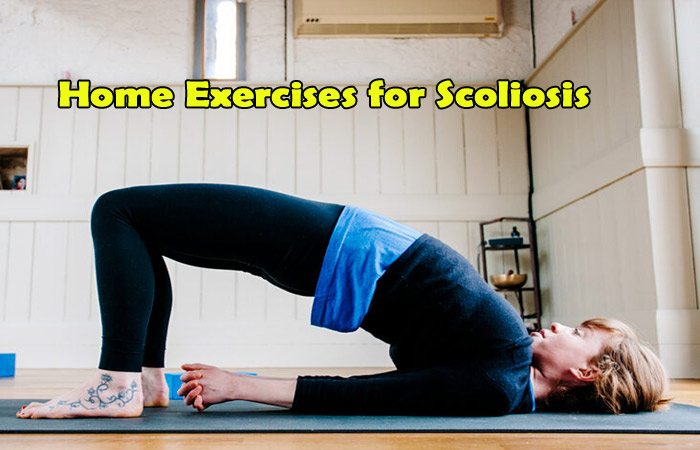What is Scoliosis? Many of us might have this question. Although the name appears to be new, this is an existing health problem that many people are experiencing. This condition may worsen a person’s health as he or she is aging. However, when not noticed at the right time and treated, it might lead to many health complications.
There are many treatments available to treat Scoliosis. However, practicing some effective exercises for scoliosis could help you gain much better health than expected.
Understanding Scoliosis
This is the condition that causes the spine to curve sideways. This can also cause pain and the weakening of the spine over the day. This will also change the way how a person walks throughout his lifetime. About 2 – 3 % of the population is experiencing Adolescent Idiopathic Scoliosis, which is the typical form and certainly needs medical treatment.Scoliosis can be treated with some exercises and stretches at the initial stage itself. Taking measures at the initial stage can help you avoid the need for surgery or any other complicated treatments or medications.
The condition of Scoliosis may increase and worsen in some people. Moreover, the curve might also increase with or without pain; therefore, many people might not become aware of this until it gets complicated.
Types of Scoliosis
Scoliosis results in an abnormal curvature of the spine. This is a disorder, which is categorized based on age, such as infantile, juvenile, and adolescent idiopathic conditions. A problem anywhere in the body would become more severe with this condition.Scoliosis is of three types, and they include:
- Mild Scoliosis: This might not require any specific medical attention, and it can be identified by just seeing the posture disorders that are visible directly to the eyes. This condition is most responsive to exercise-based treatments.
- Moderate Scoliosis: Although this can be treated with some exercises, it might seek some medical support to prevent it from developing into a severe condition.
- Severe Scoliosis: This condition needs spinal surgery, and later as suggested by doctors, it can be supported with scoliosis exercises to straighten the spine.
4 Best Home Exercises for Scoliosis
Here are some exercises for Scoliosis, which can help correct the spine cure and prevent it from getting severed.1. Step Down and One-Arm Reach
In this exercise, try to identify the leg that appears to be longer when lying on the back and step that leg on a small box or a step. Now lower the other leg down to the floor as you bend your knee. Now when you descend, raise your arm on the same side as your lowered leg up high as possible. For example, if your left foot is lowered to the floor, then raise your left arm. Practice this exercise for at least 5 – 10 minutes.2. Upward-Downward Dog
Position yourself in a plank position with arms stretched out straight and push your hips back and up as much as possible. Hold this position for at least 2 – 5 seconds, and lower the hip back down to the floor. Now try to repeat this position and make sure you don't discomfort yourself that might cause pain. Repeat this at least 10 times.3. Split Stance with Arm
Step your longer leg forward in an exaggerated stride length. Now keep your torso as upright as possible. Now begin the exercise by shifting your weight back and forth while allowing your knee in the front to bend. Try to feel the weight shifting onto your knee as you bend. When your weight is shifted forward, raise your arms opposite your front leg as high as you can. When that arm is raised upward, move your other arm back with your palm up. This can help your torso and spine turn towards the side of your front leg. You can try to repeat this exercise at least 10 times.4. Schroth
This exercise is performed with asymmetric posture. It contains an asymmetric scoliosis-specific posture that aims to improve the posture and reduce pain. This helps you to maintain a correct posture in your daily activities. In addition, it helps to strengthen your abdominal region, back, and your leg muscles. Many patients experiencing Scoliosis have proven to show positive improvements with this exercise. It has also reduced the pain level tremendously.9 Exercises To Be Avoided in Scoliosis
Although there are many core exercises for Scoliosis, a few exercises still need to be avoided, as they might worsen your condition and pain instead of curing it. Some of such exercises include;- Swimming for long hours
- Football
- Horse riding
- Torso extensions
- High jumps, ballet, backbends, and some yoga positions
- Trampolines
- Squats and lunges
- Carrying heaving objects
- Twisting exercises and more
Stretches for Scoliosis
Here are some stretches which you can try to improve the condition of Scoliosis in addition to exercises:- Try hanging from a strong bar that could hold your body weight as long as you could bear and then release and then repeat this way for a few minutes
- Try to stretch your chest. Try to stand with feet shoulder-width apart and your arms bent from the chest. Now stretch the chest by pulling the arms backward and trying to press shoulder blades together.
- You can also try backstretch. You need to stand with arms extended in front of the chest to do this. Now lace fingers and try to push them away from the chest. You can now feel a stretch in the upper back. Try to hold this stretch for a few seconds as long as you can, and then release. Try this stretch for a few minutes daily.



